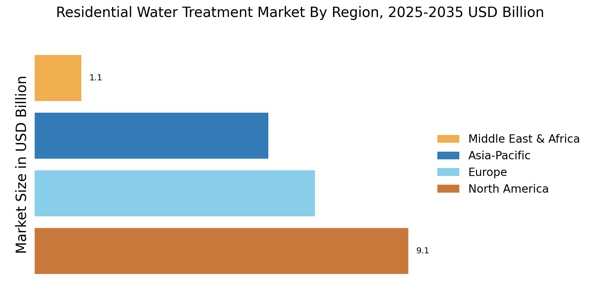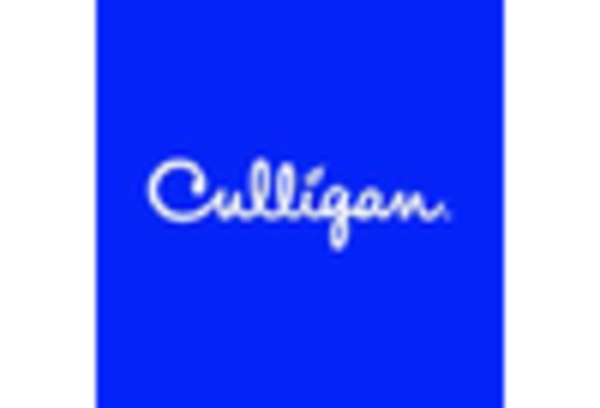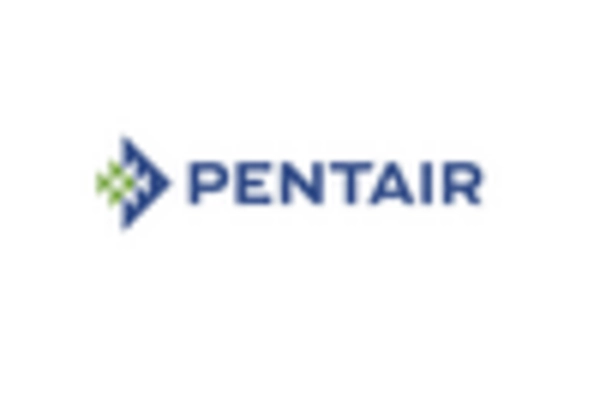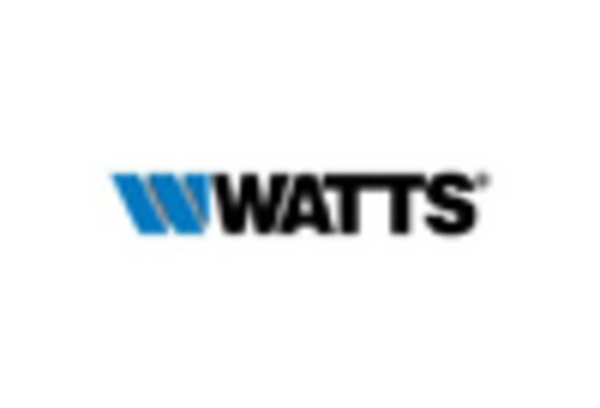Rising Water Quality Concerns
The increasing awareness regarding water quality issues is a primary driver for the Residential Water Treatment Market. Consumers are becoming more cognizant of contaminants such as lead, chlorine, and bacteria in their drinking water. This heightened concern is prompting households to invest in water treatment solutions to ensure safe and clean water. According to recent data, approximately 60% of households express dissatisfaction with their tap water quality, leading to a surge in demand for filtration systems and purification technologies. As a result, manufacturers are innovating to provide advanced solutions that cater to these concerns, thereby propelling the growth of the Residential Water Treatment Market.
Regulatory Standards and Compliance
Regulatory frameworks governing water quality and safety are evolving, significantly impacting the Residential Water Treatment Market. Governments are implementing stricter regulations to ensure that drinking water meets safety standards, which in turn drives the demand for residential water treatment solutions. For instance, the introduction of new guidelines regarding permissible levels of contaminants has led to an increase in the adoption of water filtration systems. This regulatory push not only enhances consumer confidence but also compels manufacturers to innovate and comply with these standards, thereby fostering growth within the Residential Water Treatment Market.
Environmental Sustainability Initiatives
The growing emphasis on environmental sustainability is shaping consumer preferences in the Residential Water Treatment Market. As awareness of environmental issues rises, consumers are increasingly seeking eco-friendly water treatment solutions. This trend is reflected in the rising demand for systems that minimize water waste and utilize sustainable materials. Market Research Future suggests that products designed with sustainability in mind are experiencing a growth rate of approximately 15% annually. This shift towards environmentally responsible choices is likely to encourage manufacturers to innovate and adapt their offerings, thereby influencing the trajectory of the Residential Water Treatment Market.
Increased Urbanization and Population Growth
Urbanization and population growth are significant factors influencing the Residential Water Treatment Market. As more individuals migrate to urban areas, the demand for clean and safe drinking water intensifies. Urban centers often face challenges related to water supply and quality, prompting residents to seek reliable water treatment solutions. The United Nations projects that by 2030, nearly 60% of the world's population will reside in urban areas, which could lead to a substantial increase in the demand for residential water treatment systems. This demographic shift is likely to create new opportunities for manufacturers and service providers within the Residential Water Treatment Market.
Technological Innovations in Water Treatment
Technological advancements are revolutionizing the Residential Water Treatment Market, offering more efficient and effective solutions for consumers. Innovations such as reverse osmosis, UV purification, and smart water monitoring systems are gaining traction among homeowners. These technologies not only improve water quality but also enhance user convenience and efficiency. Market data indicates that the adoption of smart water treatment systems is expected to grow by over 25% in the next five years, reflecting a shift towards more automated and user-friendly solutions. This trend is likely to drive further investment and development within the Residential Water Treatment Market.


















Leave a Comment